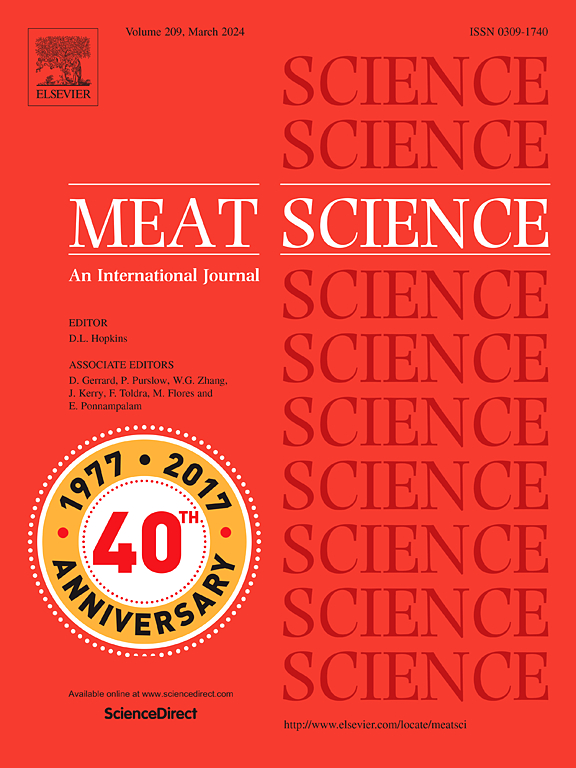New insights into the effects of dietary amino acid composition on meat quality in pigs: A review
IF 6.1
1区 农林科学
Q1 Agricultural and Biological Sciences
引用次数: 0
Abstract
Pork is an affordable protein source with higher nutrient density. In recent years, meat quality in pigs is getting increasing attention, which has a direct impact on the economic value of pork. Dietary amino acids play a key role in pig production, not only regulating pig growth and health, but also contributing significantly to meat quality. In this review, we discuss the effect of skeletal muscle composition on meat quality. Importantly, we summarize the levels of essential amino acids (EAAs), such as lysine, methionine, threonine, tryptophan and branched-chain amino acids (BCAAs), in diets for finishing pigs to improve meat quality. The beneficial effects of flavor amino acids on meat quality, including flavor production, muscle fiber-type composition and intramuscular fat deposition, are further systematically summarized. We also focus on the impact of dietary amino acid levels on environmental benefits, although research in this area is still limited. Considering that the previously established EAA requirements are based on the principle of maximizing growth rate and feed conversion, this review will provide new insights into the effects of dietary amino acids on aspects of meat quality and highlight the current gaps to promote future research.
饲粮氨基酸组成对猪肉品质影响的研究进展
猪肉是一种经济实惠的蛋白质来源,具有较高的营养密度。近年来,猪的肉质问题越来越受到人们的关注,它直接影响到猪肉的经济价值。饲粮氨基酸在猪生产中起着关键作用,不仅调节猪的生长和健康,而且对肉品质也有重要影响。本文就骨骼肌成分对肉品质的影响作一综述。重要的是,我们总结了育肥猪饲粮中必需氨基酸(EAAs)的水平,如赖氨酸、蛋氨酸、苏氨酸、色氨酸和支链氨基酸(BCAAs),以提高肉品质。进一步系统总结了风味氨基酸对肉品质的有益影响,包括风味产生、肌纤维类型组成和肌内脂肪沉积。我们也关注膳食氨基酸水平对环境效益的影响,尽管这方面的研究仍然有限。考虑到以往确定的氨基酸需要量是基于最大化生长速率和饲料转化率的原则,本综述将为饲粮氨基酸对肉品质的影响提供新的见解,并指出目前的不足,以促进未来的研究。
本文章由计算机程序翻译,如有差异,请以英文原文为准。
求助全文
约1分钟内获得全文
求助全文
来源期刊

Meat Science
工程技术-食品科技
CiteScore
12.60
自引率
9.90%
发文量
282
审稿时长
60 days
期刊介绍:
The aim of Meat Science is to serve as a suitable platform for the dissemination of interdisciplinary and international knowledge on all factors influencing the properties of meat. While the journal primarily focuses on the flesh of mammals, contributions related to poultry will be considered if they enhance the overall understanding of the relationship between muscle nature and meat quality post mortem. Additionally, papers on large birds (e.g., emus, ostriches) as well as wild-captured mammals and crocodiles will be welcomed.
 求助内容:
求助内容: 应助结果提醒方式:
应助结果提醒方式:


